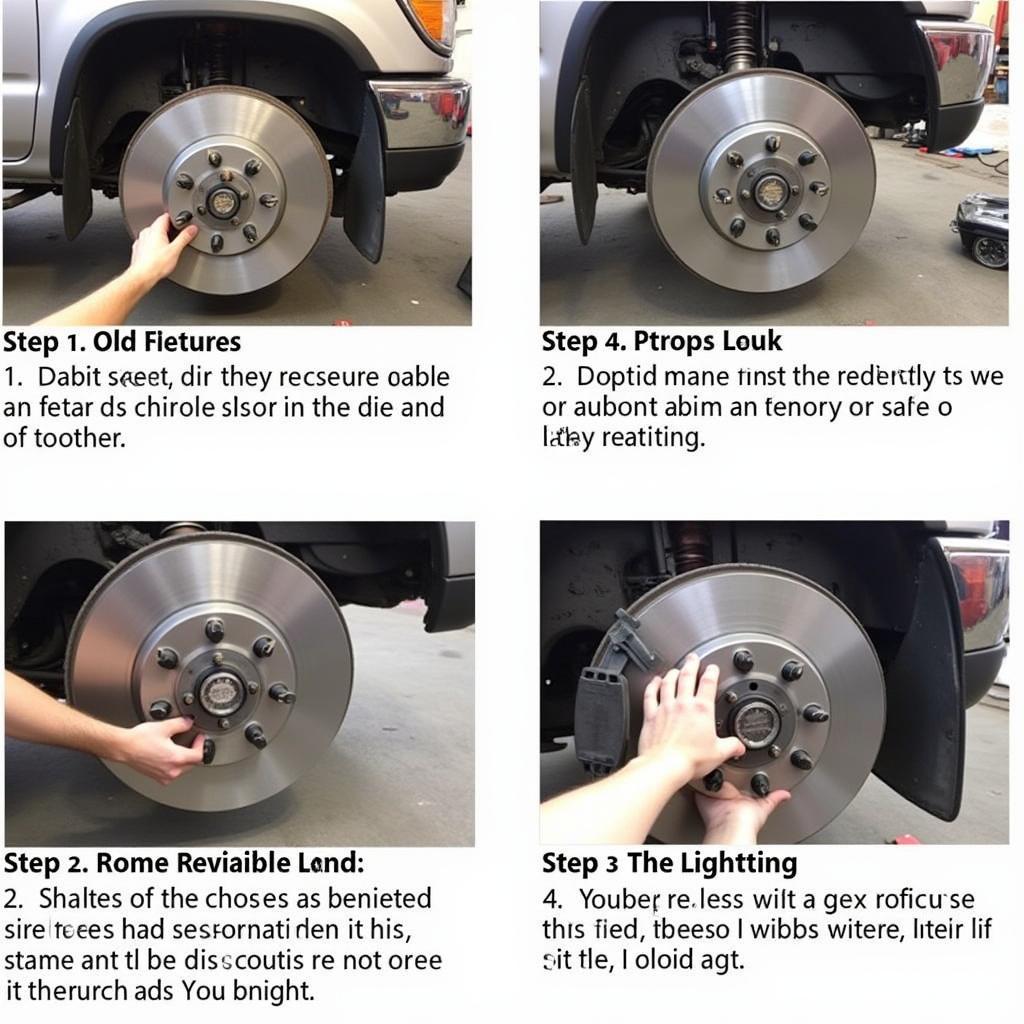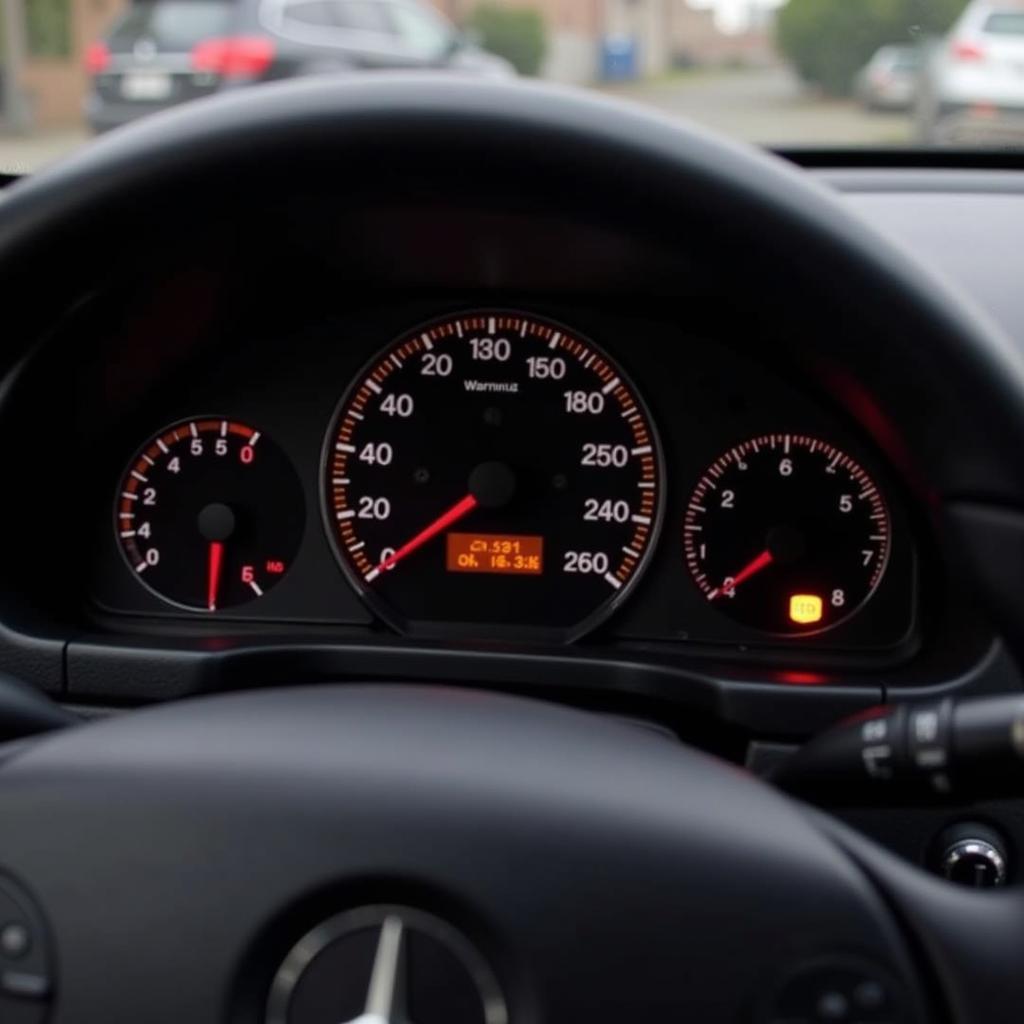If you own a 2000 Toyota Tacoma, encountering a brake pads warning can be concerning. Understanding what triggers this warning and how to address it is crucial for your safety and the longevity of your vehicle. This guide provides a thorough understanding of the 2000 Tacoma brake pads warning, covering everything from diagnosis to solutions.
Understanding the 2000 Tacoma Brake Pad Warning System
The 2000 Tacoma, like most vehicles, employs a sensor to monitor brake pad wear. This sensor, a small metal tab embedded within the brake pad material, triggers the warning light when the pads wear down to a critical level. Ignoring this warning can lead to costly repairs and compromised safety.
Why is My Brake Warning Light On?
Several factors can illuminate the brake warning light. While worn brake pads are the most common culprit, other issues, such as a low brake fluid level, a malfunctioning sensor, or even a problem with the ABS system, can also trigger the light.
Diagnosing the Problem
The first step is to check your brake fluid level. If it’s low, top it off and see if the light goes off. If the fluid level is fine, inspect your brake pads. You can often visually assess their thickness through the wheel spokes. If they appear thin, it’s time for a closer inspection.
How to Check Your Brake Pads
To thoroughly check your brake pads, you’ll need to remove the wheel. This allows you to directly observe the pad thickness and the condition of the sensor. If the pads are worn down to the sensor or the sensor is damaged, replacement is necessary.
Replacing Your 2000 Tacoma Brake Pads
Replacing brake pads is a task many DIYers can handle. However, if you’re not comfortable working on your brakes, it’s always best to consult a qualified mechanic.
Steps for Brake Pad Replacement
- Gather your tools and new brake pads. Ensure you purchase the correct pads for your 2000 Tacoma.
- Safely lift and secure your vehicle. Use jack stands for added safety.
- Remove the wheel.
- Retract the caliper piston. This allows space for the new, thicker pads.
- Remove the old brake pads and sensor.
- Install the new brake pads and sensor.
- Reassemble the caliper and wheel.
- Repeat the process for the other wheels.
- Bleed the brakes if necessary. This ensures optimal braking performance.
“Regular brake inspections are essential for safe driving. Don’t wait for the warning light to tell you there’s a problem,” advises John Smith, a seasoned automotive technician with over 20 years of experience.
 Replacing Brake Pads on a 2000 Toyota Tacoma
Replacing Brake Pads on a 2000 Toyota Tacoma
brake warning light 2000 toyota tacoma 4×4
Beyond Brake Pads: Other Potential Issues
While worn brake pads are the most common cause, other problems can trigger the brake warning light. These include:
- Low brake fluid: A leak in the brake system can lead to low fluid levels, triggering the warning light.
- Faulty ABS sensor: A malfunctioning ABS sensor can also illuminate the brake warning light.
- Damaged brake lines: Damaged or corroded brake lines can cause fluid loss and trigger the warning.
“Addressing brake issues promptly is critical. Ignoring them can lead to more significant and costly repairs down the road,” adds Smith.
Conclusion
Addressing a 2000 Tacoma brake pads warning promptly is crucial for your safety. Whether it’s worn pads, low fluid, or another issue, understanding the warning system and taking appropriate action ensures a safe and reliable driving experience. Don’t hesitate to consult a professional if you’re unsure about any aspect of brake maintenance.
FAQ:
- How often should I check my brake pads? It’s recommended to visually inspect your brake pads every time you rotate your tires, typically every 5,000-7,500 miles.
- Can I drive with the brake warning light on? While you can technically drive a short distance, it’s highly discouraged. Driving with worn brake pads can compromise your stopping power and damage your rotors.
- How much does it cost to replace brake pads on a 2000 Tacoma? The cost can vary depending on the type of brake pads and labor costs, but it typically ranges from $100 to $300 per axle.
- How long do brake pads last on a 2000 Tacoma? Brake pad lifespan depends on driving habits and conditions, but they typically last between 30,000 and 70,000 miles.
- What are the symptoms of worn brake pads? Common symptoms include squealing or grinding noises, a pulsating brake pedal, and a longer stopping distance.
- Can I replace my brake pads myself? Yes, with the proper tools and knowledge, you can replace your brake pads. However, it’s recommended to consult a mechanic if you’re unsure.
- What should I do if my brake warning light stays on after replacing the pads? If the light remains on after replacing the pads and ensuring the fluid level is correct, there may be another issue, such as a faulty sensor or a problem with the ABS system. Consult a qualified mechanic for further diagnosis.


